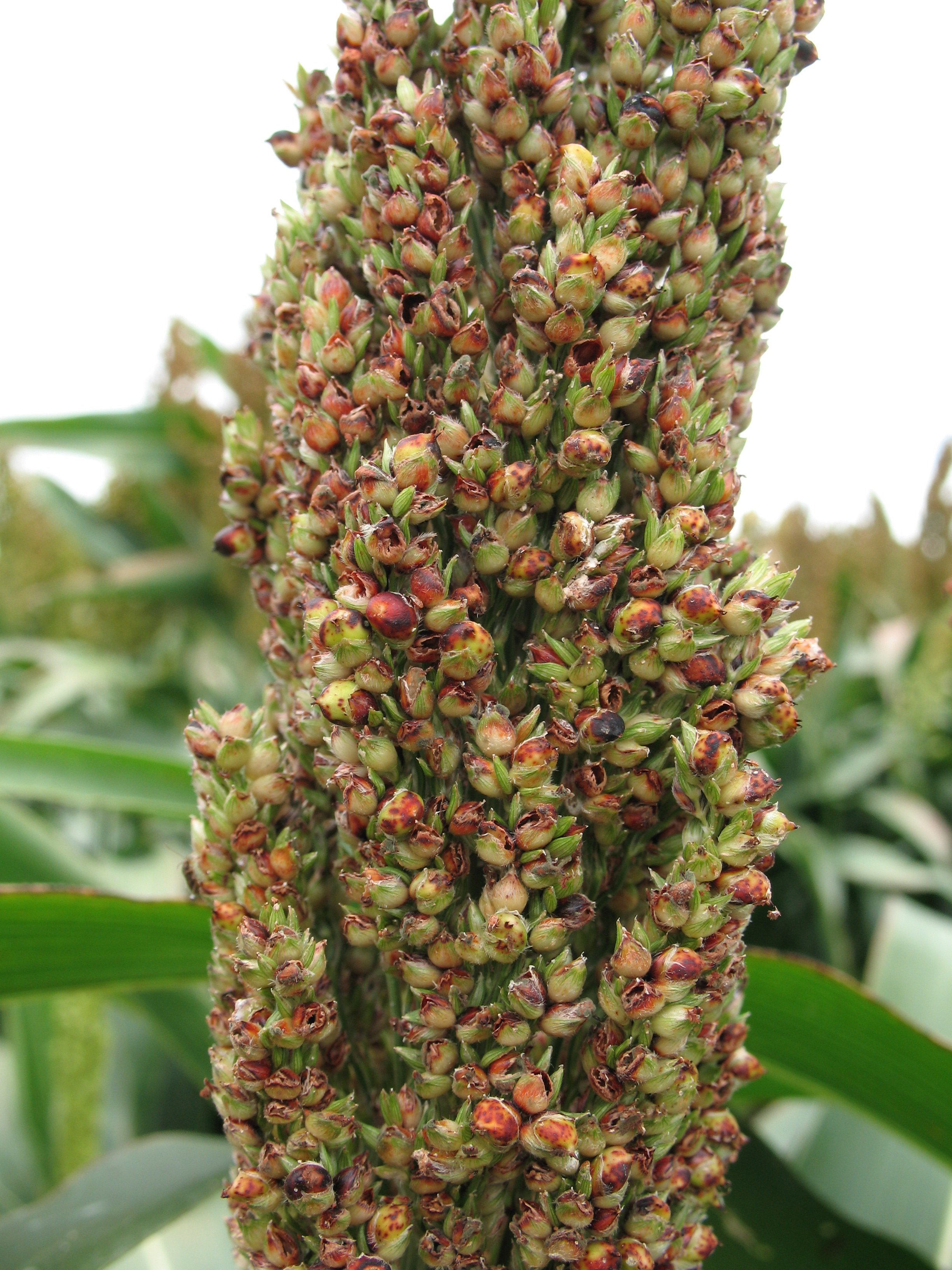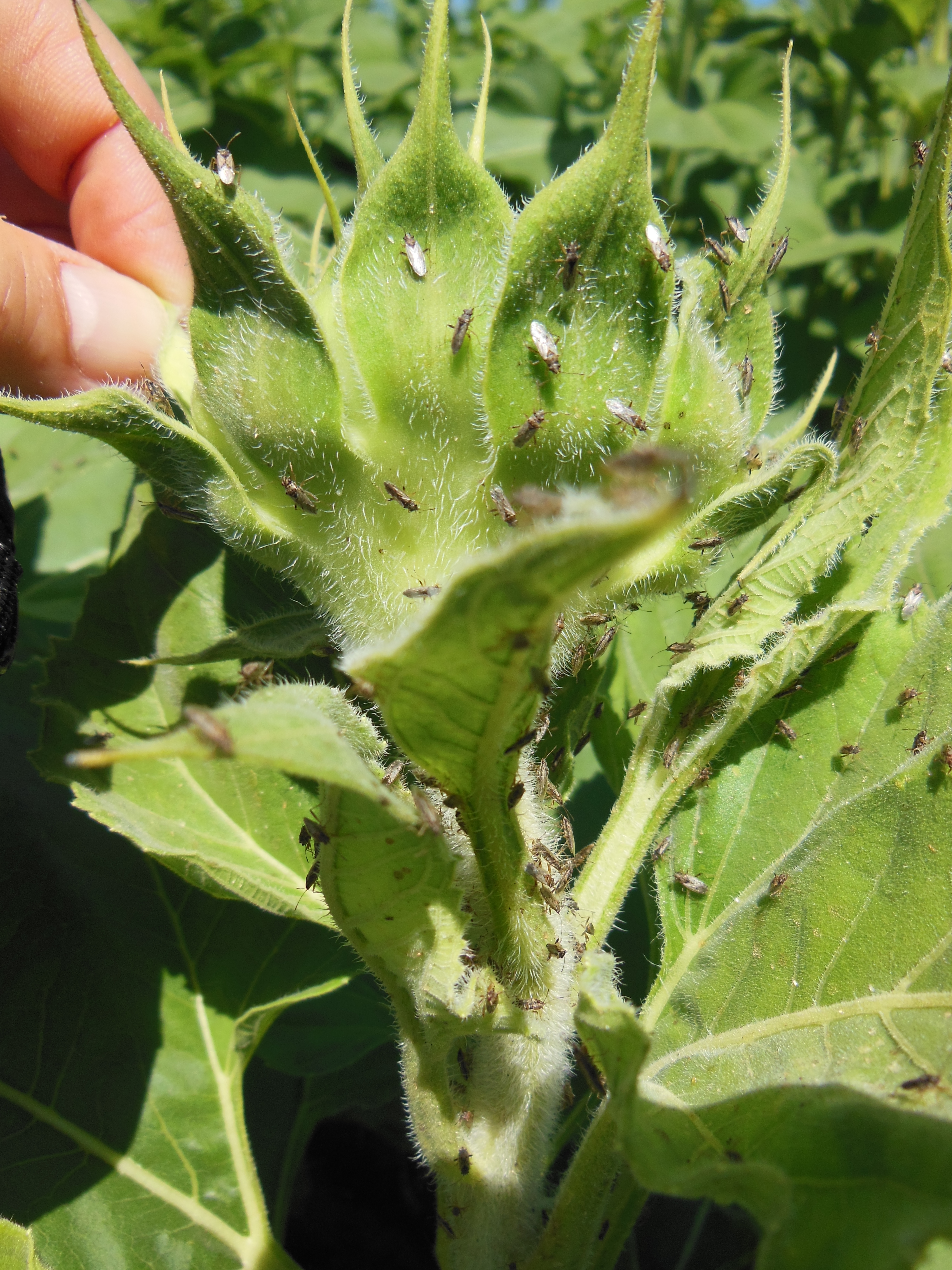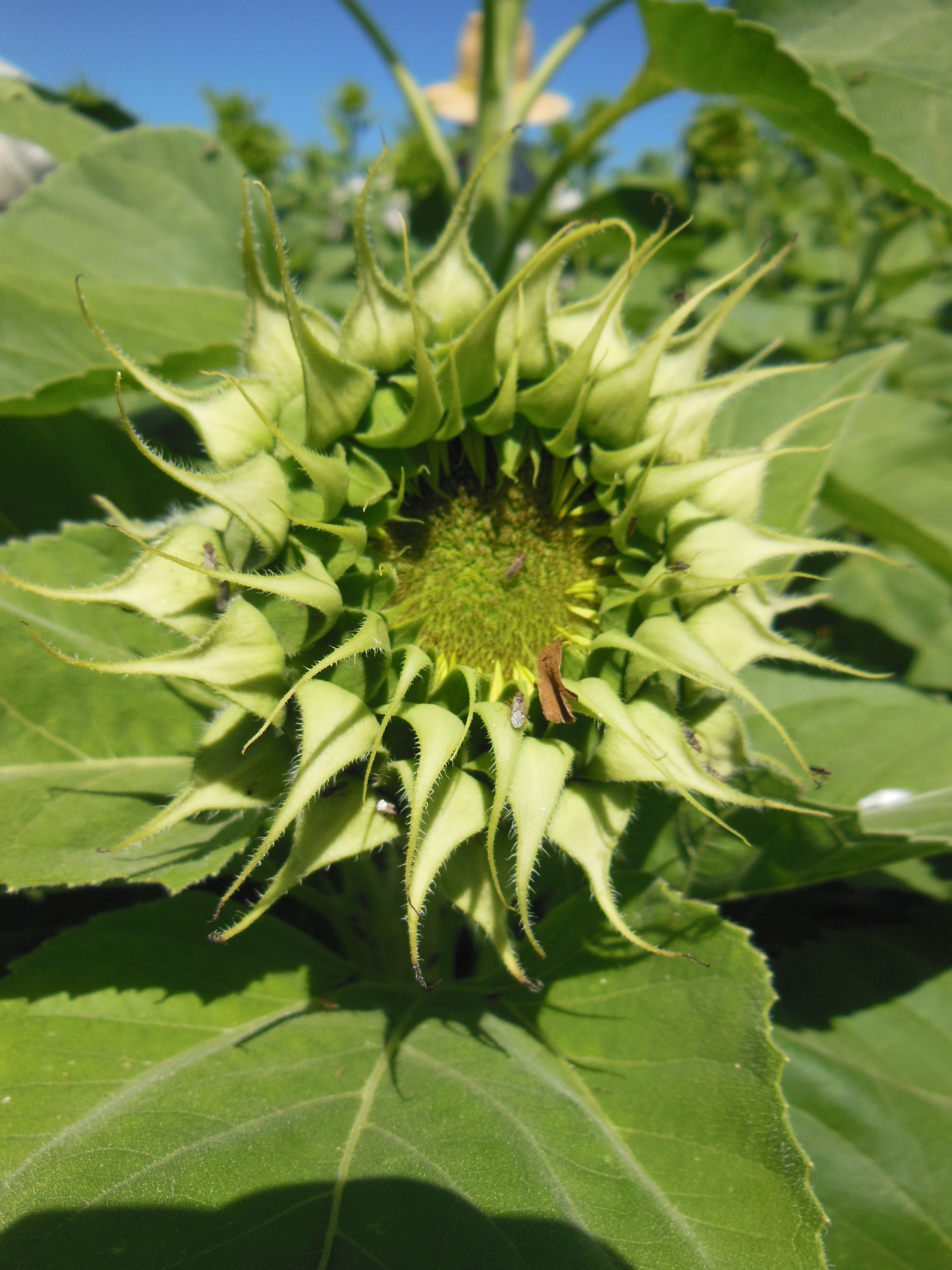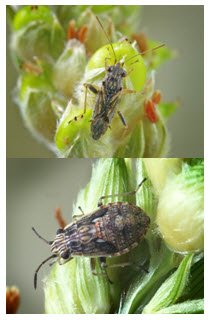Since early November, large numbers of Rutherglen bug (RGB) have been migrating into cropping regions from northern NSW through to Central Queensland. Whilst the exact origin of the bugs is unknown, it is likely that they are being carried on storm fronts from inland regions where they have bred up over winter and spring on native host plants that are now drying off. Given how widespread the infestations are, it is unlikely that local weed hosts are driving the populations being seen in crops this season.
Rutherglen bug adult (top) and late instar nymph (bottom). Photo: Keith Power.
RGB damage to seedling crops
Large numbers of RGB are affecting seedling establishment, simply by weight of numbers feeding on the emerging seedlings. In some instances the seedling crops are invaded by large numbers of RGB nymphs walking out of weedy fallows into establishing crops. Ploughing a deep furrow between the seedling crop and the source of RGB, or a border spray may be sufficient to prevent ongoing infestation.

Sorghum is vulnerable to RGB from flowering to soft dough. Research has shown that sorghum crops infested during flowering will fail to set seed, and infestations at milky dough stage will result in seed covered in small, dark feeding wounds.
Developing grain affected by RGB feeding is light in weight, with poor germination. Under wet conditions, fungal and bacterial infections further degrade RGB-damaged grain, infecting through feeding wounds on the seed.
Developing sorghum head showing signs of RGB damage; undeveloped seed, and spotting on developing seed.
Monitor for RGB in sorghum crops from booting to milky dough. This sampling can be done at the same time as checking for Helicoverpa. Shake the sorghum head into a bucket and count the number of RGB present. Repeat for at least 10 heads from across the field and average the RGB count. RGB infestations can vary greatly between heads. Take samples from the earliest flowering sections of the field as these will incur damage first.
Female RGB start laying eggs once grain fill starts and they have fed on the protein in the developing seed. Nymphs will emerge, and populations start to increase rapidly within 10 days. First instar nymphs have orange-reddish abdomens and do not feed on the developing seed. Late instar nymphs have developing wingbuds and are browner in colour (see picture at top of page).
The management recommendations for RGB in sorghum are:
- Flowering – Milky dough:control warranted if more than 20 bugs per head
- Soft dough: 20-25 bugs per head
- Hard dough – physiological maturity: RGB have no impact on yield at this stage.
These thresholds were derived from trials done in irrigated and non-irrigated plots. RGB infestations did not significantly increase the yield loss in moisture stressed plots, but there was a significant difference in the yield of the irrigated and moisture stressed plots. In other words, the impact of RGB was insignificant in terms of impact on yield, compared with the impact that moisture stress had on yield.
These preliminary thresholds provide a broad guide for a range of sorghum prices. To work out a threshold for your specific situation, use a potential yield loss of 20% for these RGB numbers. For example, if you have 20 bugs per head at flowering then the potential yield loss will be 20%. With a sorghum price of $200/t, then a 20% yield loss will cost $40/ha. In this example, clearly it is an economic proposition to treat the infestation to prevent yield loss.
RGB damage to sunflower

In sunflower there are two critical periods during which RGB control may be necessary to prevent crop loss:
- Budding: bugs congregrate on the upper stem and bud. Bug feeding on the stem behind the head may cause the stem to wither and the bud droop. These heads do not continue to develop and set seed normally.
- Flowering and seed fill: eggs are laid in the florets when they open, and nymphs emerge in about a week and start feeding on developing seeds.
Adult numbers are often minor in comparison with the size of the population once nymphs start to emerge. Preventing the subsequent population of nymphs is the key driver of RGB control prior to petal drop.
Feeding on developing seeds causes yield loss, and a loss of oil content and quality of grain.
Reinfestation is a real possibility, with continuing influxes of RGB into crops through November – January. It is likely that spring crops will require multiple sprays to keep populations below threshold and prevent the build up of large populations of nymphs through the grain filling stage. Being very clear on what critical stages need to be protected will enable better targeting of RGB populations.
Thresholds for spring (early) sunflower:
- Budding: 10 bugs per head
- Flowering – seed fill: 20-25 bugs per head
The aim of RGB control is to prevent adults from laying eggs and having large populations of nymphs present, feeding on maturing grain. This is why the thresholds are low, it is not related to the direct damage the adults are causing, but to the potential for a subsequent population feeding on the developing seed.
Thresholds for late sunflowers are higher, reflecting the lower potential for large increases in the size of the population. From about February on, RGB stop laying eggs and start to go into a reproductive diapause (resting stage) through winter.
Late sunflower crop thresholds (January – April):
- Budding: 20-25 RGB per bud
- Flowering – seed fill: 50 RGB per head
Making decisions about the control of RGB in sunflower
Synthetic pyrethroids (SP) are the only really effective available option for controlling RGB. Synthetic pyrethroids are extremely disruptive to natural enemies, and spraying for RGB may increase the survival of Helicoverpa larvae that would have otherwise been controlled by predatory bugs, beetles and parasistoids. If Helicoverpa are present, consider including NPV. Bees are also killed by synthetic pyrethroids. Note that the permit for indoxacarb (Steward®) has now lapsed.
Critical periods – targeting control.

Wilting sunflower bud in a field heavily infested with RGB.
The second critical stage is just prior to petal drop. From about petal drop, when the florets are opening on the face of the flower, RGB will start to lay eggs between the florets. It is critical that RGB adults are controlled before they can lay eggs for two key reasons:
- the resulting nymph population can be many times larger than the adult population (one RGB female can lay up to 400 eggs);
- once the sunflower heads starts to turn down it is extremely difficult to get good control of RGB feeding on the developing seed.
Ongoing monitoring is essential post spray.

